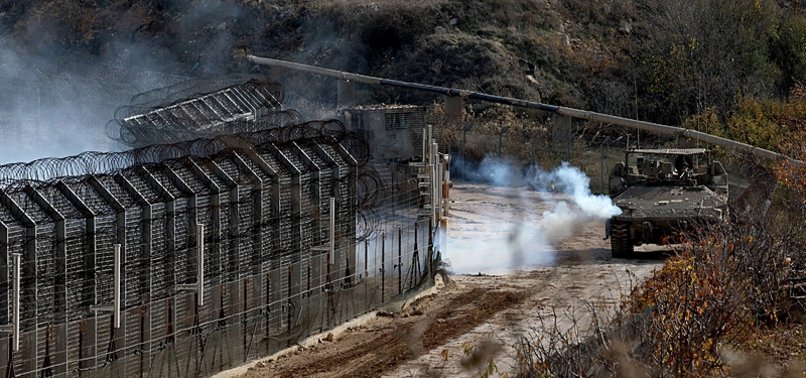While awareness has increased and steps have been taken to tackle climate change in Qatar and the GCC region, more needs to be done.. now, writes Neeshad Shafi.
Qatar’s climate change policies and responses have evolved since the adoption of the 2015 Paris Agreement on climate change.
The study, published in the journal Nature Climate Change carried out by Elfatih Eltahir, a professor of civil and environmental engineering at MIT, and Jeremy Pal at Loyola Marymount University, predicts that extreme temperatures currently recorded once in every 20 summer days will soon become a new norm.
It notes that “major cities such as Doha, Qatar, Abu Dhabi, Dubai in the United Arab Emirates and Bandar Abbas, Iran,” could be hitting the wet-bulb temperature “several times over a 30-year period” by the end of the century if the carbon (CO2) emissions do not decrease.
The worrying impact of climate change on human health and wellbeing
The extreme heat waves could endanger the lives of anyone outdoors in the region, with the authors warning that six hours of continuous exposure to a wet-bulb temperature of 95 degrees or higher would be enough to kill any human.
However, in the past two decades, Gulf countries have expanded their understanding of the various negative effects of climate change on the region – including on agriculture, food and water security, infrastructure resilience, public health, and the environment.
The geographic and economic similarities of these countries make these impacts similar in many cases. However, reflecting the relative diversity of their political economies and broader policy priorities, they have worked to address climate change in varying degrees of depth and breadth. This is despite Gulf Arab states having a challenging relationship when it comes to climate change.
Impact on Qatar and GCC region
For the GCC region, climate change implications will impact various fields, including environmental, economic, political and even security. The Arabian Peninsula is characterised by great variability in seasonal and annual precipitation, as well as extreme temperatures.
Combined with rising population levels, climate change will aggravate existing challenges of water scarcity and food security and raise new challenges through adverse impacts on human health, economic development, and the environment.
For instance, regional average temperature increases of 1.8°C by 2040 and 3.6°C by 2070 combined with decreasing precipitation exacerbate the already high levels of desertification in the region, further reducing the availability of arable land and water resources and leading to a higher incidence of drought.
The impact of climate change on rising sea levels will also affect coastlines and marine ecosystems in the region, and even threaten coastal desalination plants that are an important source of water for the GCC region.
Rising sea levels in the region will increase the salinity of underground water supplies, degrading the land further and reducing regional biodiversity.
“With the increasing temperature in the region and increase in brine and plume discharge, there is a possibility that the marine communities will collapse.”
The low-lying coastal zones of Bahrain, Kuwait, Qatar, and the United Arab Emirates, where much of the countries’ populations and industries reside, as well as the various artificial islands in the Gulf, will be mostly vulnerable to sea level rise.
The projected rise in temperatures and incidence of drought are also expected to increase the frequency of dust storms and sand dune movements and increase soil erosion. In addition to further exacerbating existing stresses on water supplies, climate change will contribute to air pollution and have negative health impacts.
For Qatar, the country’s ecological, physical and economic vulnerabilities will be exposed.
The Gulf state’s last submitted National Communication in 2011 to the United Nations Framework Convention on Climate Change (UNFCCC), stresses that climate change presents a dual threat to Qatar: on one hand, like other developing countries with minimal adaptive capacity, Qatar’s ecological and human systems are prone to the adverse impacts of climate change.
Read also: 5 easy steps you can take to protect our ocean
On the other hand, due to its total dependence on the export of carbon-based resources, Qatar’s economic welfare and prosperity depends on the outcome of the climate change negotiations which seeks, as an ultimate objective, a complete phase out of fossil fuel energy sources from the world energy market.
Temperatures are expected to rise 1.8°C by 2040 and 3.6°C by 2070. Jeremy and Elfatih (2015) predict the temperature (Tmax) is likely to exceed 55°C and humidity will increase near the coastal studies and make it difficult to survive – as shown in figure 1.

Furthermore, the high-resolution versions of standard climate models predict that many major cities including those in Qatar, could exceed a tipping point for human survival, even in shaded and well-ventilated spaces. This worrying prediction has never been reported for any location on earth, the study reveals.
Increasing sea-levels are also another major threat to all coastal Gulf cities in the near future – including Qatar.
According to Dasgupta et al., a one-meter sea-level rise will impact over 2% of the land area. If this rises by 5 metres, nearly 13% of the land will be affected.
Nearly 2% of GDP and over 20% of wetlands will be lost if sea-level rises by just one metre, posing a threat to the wealth generating industrial and commercial complexes situated along the coastal areas.
Studies also show that marine biodiversity like coral reefs and fish stock is highly vulnerable. The Persian Gulf is also vulnerable to natural and man-made interventions like red tide, temperature, oil spills, brine discharge and industrial discharge.
Even fish mortality is recurrent in the last few years.
During the summer of 1996 and 1998, massive amounts (40 Tonnes) of dead fish were recorded, and a similar case was observed in August 2015. Studies show that this is attributed to increases in temperature and low levels of dissolved oxygen.
With the increasing temperature in the region and increase in brine and plume discharge, there is a possibility that the marine communities will collapse.
Additionally, physical vulnerabilities exist in the water and agriculture sectors, energy sector, public health, coastal zones and marine environment.
Qatar’s growing climate action
Qatar has engaged with climate action mainly through two major events, hosting the 2012 UN Climate Change Conference and its successful 2010 bid for the 2022 FIFA World Cup, which will be the first carbon-neutral FIFA World cup in history.
At the UN Climate Action Summit 2019, Amir Sheikh Tamim bin Hamad Al Thani stated: “The phenomenon of climate change is undoubtedly one of the serious challenges of our time. It is a problem that is continuously exacerbating and causing many problems which intertwine in their economic, environmental and social dimensions and have very serious negative repercussions on all forms of life including human life and on both developed and developing countries alike, especially on the tracks of the sustainable development which all peoples aspire to.”
Region-wide, there is a clear thirst for change. This can be seen by a recent announcement for an Emirati Special Envoy for Climate Change in November 2020, followed by Qatar’s establishment of a Special Envoy of the Minister of Foreign Affairs for Climate Change and Sustainability,
Qatar has also joined a consortium of founding member countries to establish the Global Green Growth Institute (GGGI). The institute provides developing countries with the tools to build institutional capacity and develop green growth policy, strengthen peer learning and knowledge sharing, and engage private investors and public donors.
“In recent years the emission trend has grown and Qatar’s role can no longer be ignored.”
At the UN General Assembly in 2013, Sheikh Tamim also described the newly created Global Dryland Alliance (GDA), an organisation of dryland countries now headquartered in Doha, as an initiative created to establish an international organisation to face food insecurity consequences and negative environmental and economic impacts associated with climate change.
Years later at the UN Climate Summit at the United Nations in 2019, the amir announced a contribution of $100 million to support small island developing states and the least developed countries in dealing with climate change, natural hazards, and environmental challenges.
Meanwhile Qatar also announced the Al Kharsaah Solar PV IPP Project, a 800 megawatt-peak (MWp) solar plant that will be located 80km west of Doha, country’s first solar tender.
State-owned Qatar Petroleum released its new sustainability strategy report, which established several targets in line with the goals of the Paris Agreement. The plans include a reduction in GHG emissions by 2030. The report also claims to reduce the emissions intensity of the country’s LNG facilities by 25% and of its upstream facilities by at least 15%. It also wants to reduce flare intensity across upstream facilities by over 75%.
The Gulf state further cemented its commitment by joining the new Net Zero Producers Forum, co-founded by the US, Saudi, Norwegian and Canadian governments with an agenda to tackle methane and carbon emissions in the oil and gas sector.
‘Information gap’
Undoubtedly, Qatar’s role in global climate change is insignificant because of its negligible global share of greenhouse gas emissions.
However, in recent years the emission trend has grown and Qatar’s role can no longer be ignored. The reality is, the potential risks imposed on the Gulf state are severe.
Unfortunately, there are very limited studies on the impact of climate change in Qatar directly, which makes it difficult to document the exact level of impacts on all sectors. Until now, neither government agencies, nor academia has taken any serious steps to address a vital information gap.
Read also: US climate envoy praises Qatar’s commitment to environmental projects
As a major fossil exporter and one of the wealthiest countries, Qatar should do its fair share in reducing domestic greenhouse gas emissions, develop strong climate adaptation plans and support poor developing countries through development aid and infrastructure assistance.
Incorporating climate change considerations as an integral element in coronavirus economic recovery strategies and expanding the scope of climate change policy beyond the co-benefits of economic diversification and adaptation would help set Qatar on a more sustainable, low-emission, and climate-resilient trajectory.
Neeshad Shafi is an Environmentalist, Speaker, and policy-oriented social change advocates, best known for his work on environmental and climate change policy in the Gulf and Middle East.
The views and opinions expressed in this article are those of the authors and do not necessarily reflect the official policy or position of Doha News, its editorial board or staff.
Follow Doha News on Twitter, Instagram, Facebook and Youtube







